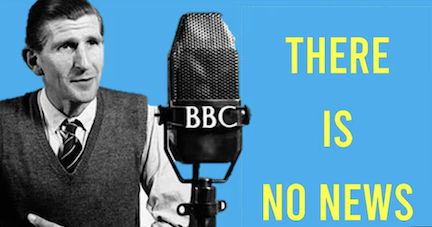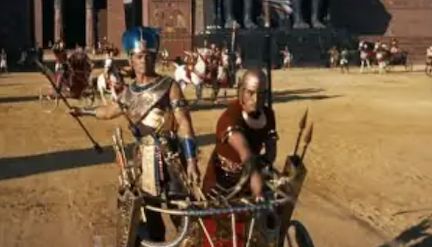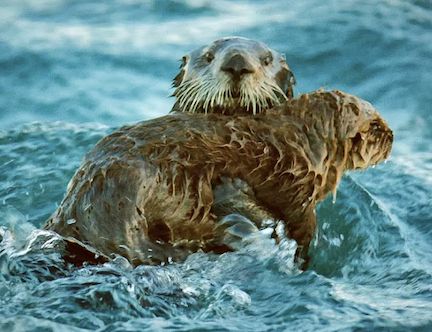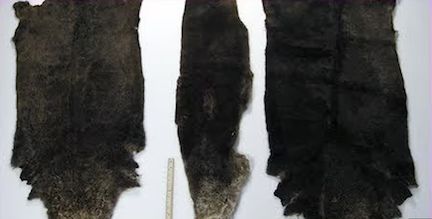"When There Is No News" God's Presence Is Constant
On April 18, 1930, the BBC announced, “There is no news.”
On April 18, 1930, nothing at all newsworthy occurred — at least according to the BBC. At the start of its regular news broadcast at 8:45 p.m., the BBC announced, “Good evening. Today is Good Friday. There is no news.” This unexpected declaration was followed by 15 minutes of piano music, before the radio station resumed its broadcast of Wagner’s opera Parsifal.

In our fast-paced, information-saturated world, it might be hard to imagine a day when literally nothing made the news. But even on that date so long ago, the stunning announcement, “There is no news,” took everyone by surprise.
Now, think about that for a moment. An entire global news agency, tasked with informing the public, had nothing to report. No headlines. No drama. No crisis. Just ... silence and a little music.
That moment reminds me a lot of the seasons in our spiritual lives when it seems like nothing is happening. We read our Bibles, we pray, we go to church—but we don’t feel goosebumps or hear God speak loudly. It’s tempting to think, “God must not be doing anything in my life right now.”
But friends, silence doesn’t mean absence! Just because the headlines of our lives feel quiet doesn't mean God isn't at work behind the scenes. Some of God’s greatest work is done in the stillness.
Psalm 46:10 says, "Be still, and know that I am God."
It doesn’t say, “Be busy,” or “Make some noise.” It says, “Be still.”
In those quiet seasons, God is still sovereign. He’s still shaping you, preparing you, guiding you—even when there’s “no news.”
So the next time your life feels silent, and heaven seems quiet, remember: Just because you don’t see it or hear it, it doesn’t mean God isn’t doing something powerful.
"For God alone, O my soul, wait in silence, for my hope is from him" (Psalms 62:5, ESV).
God's Relentless Pursuit
"Surely goodness and mercy shall follow me all the days of my life, and I shall dwell in the house of the LORD forever" (Psalms 23:6, ESV).
What an inappropriate translation for Psalm 23!
The word for follow is the same word used when Pharaoh's heart was hardened after he had let the Israelites leave. Did Pharaoh "follow" them? No, he PURSUED them; he wanted them back!

The same word is used when Saul was looking for David. Was Saul 'following' David? No, he hunted him down! This word is used many times when a person or group is chasing another, and is not, in context, translated as "follow."
Several "literal" translations express it this way:
Literal Standard Version
Surely goodness and kindness pursue me All the days of my life, And my dwelling [is] in the house of YHWH, For [the] length of [my] days!
Young's Literal Translation
Only -- goodness and kindness pursue me, All the days of my life, And my dwelling is in the house of Jehovah, For a length of days!
Smith's Literal Translation
Surely goodness and mercy, shall pursue me all the days of my life: and I dwelt in the house of Jehovah to the length of days.
Make no mistake: the goodness of God is not following you like a puppy waiting to be noticed, it is pursuing you, chasing you down, hunting you, urging you to notice it. The passion with which a man will hunt his enemy, the seething desire one has to see his foe destroyed is the same zeal, vigor and perseverance God uses to love, care for and bless us. Turn around and acknowledge the One who has chased you for so long and thank Him for His relentless pursuit and the excessive devotion that allows your cup to be overflowing!
Of Sea Otters and God's Safe Keeping
Weighing between 40 and 100 pounds, the sea otter is the world's smallest (and maybe most adorable) species of marine mammal, while at the same time being the heaviest member of the weasel family.

Sea otters have voracious appetites and relish eating abalone, clams, and other marine species. With their high metabolism, they consume about 25 percent of their weight in food every day.
While there were once around a million sea otters in the North Pacific, aggressive fur-trade hunting in the early 1900s decimated their numbers to just over a thousand worldwide.

Today, after laws were passed to protect them, it is estimated that there are about 106,000 sea otters. However, they are still categorized as endangered.
What made the pelts of sea otters so valuable that these creatures were nearly hunted to extinction? Unlike other marine mammals, sea otters don't have a layer of blubber to keep them warm. Instead, they have the densest fur in the animal kingdom, ranging from 250,000 to a million hairs per square inch. By comparison, the average human head contains 100,000 hair follicles.

Whether you're as bald as a baby or you have 250,000 hairs per square inch of scalp, God is lovingly concerned with every detail of your life and that every hair of your head is numbered. Jesus said, "Are not two sparrows sold for a copper coin? And not one of them falls to the ground apart from your Father's will. But the very hairs of your head are all numbered" (Matthew 10:29-30, NIV).
In Psalm 139:14 David said, "I praise You becuase I am fearfully and wonderfully made"